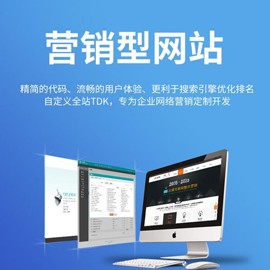Django部署一個(gè)簡(jiǎn)單的用戶(hù)后臺(tái)-創(chuàng)新互聯(lián)
第一步編寫(xiě)models.py,下面是通過(guò)在myauth.py 文件models.py 的用戶(hù)內(nèi)容,再在models.py中引入這個(gè)文件
成都創(chuàng)新互聯(lián)-專(zhuān)業(yè)網(wǎng)站定制、快速模板網(wǎng)站建設(shè)、高性?xún)r(jià)比曲水網(wǎng)站開(kāi)發(fā)、企業(yè)建站全套包干低至880元,成熟完善的模板庫(kù),直接使用。一站式曲水網(wǎng)站制作公司更省心,省錢(qián),快速模板網(wǎng)站建設(shè)找我們,業(yè)務(wù)覆蓋曲水地區(qū)。費(fèi)用合理售后完善,10多年實(shí)體公司更值得信賴(lài)。
models.py內(nèi)容如下:
from __future__ import unicode_literals from django.db import models import myauth # Create your models here.
myauth.py內(nèi)容
#!/usr/bin/python
# -*- coding: utf-8 -*-
__author__ = 'gaogd'
from django.db import models
from django.contrib.auth.models import (
BaseUserManager, AbstractBaseUser
)
class MyUserManager(BaseUserManager):
def create_user(self, email,name, date_of_birth, password=None):
"""
Creates and saves a User with the given email, date of
birth and password.
"""
if not email:
raise ValueError('Users must have an email address')
user = self.model(
email=self.normalize_email(email),
date_of_birth=date_of_birth,
name=name ##用戶(hù)名
)
user.set_password(password)
user.save(using=self._db)
return user
def create_superuser(self, email,name, date_of_birth, password):
"""
Creates and saves a superuser with the given email, date of
birth and password.
"""
user = self.create_user(email,
password=password,
name=name,
date_of_birth=date_of_birth,
)
user.is_admin = True
user.save(using=self._db)
return user
class MyUser(AbstractBaseUser):
email = models.EmailField(
verbose_name='email address',
max_length=255,
unique=True,
)
name = models.CharField(u'名字', max_length=32)
token = models.CharField(u'token', max_length=128,default=None,blank=True,null=True)
department = models.CharField(u'部門(mén)', max_length=32,default=None,blank=True,null=True)
mobile = models.CharField(u'手機(jī)', max_length=32,default=None,blank=True,null=True)
memo = models.TextField(u'備注', blank=True,null=True,default=None)
date_of_birth = models.DateField()
is_active = models.BooleanField(default=True)
is_admin = models.BooleanField(default=False)
objects = MyUserManager()
USERNAME_FIELD = 'email'
REQUIRED_FIELDS = ['name']
def get_full_name(self):
# The user is identified by their email address
return self.email
def get_short_name(self):
# The user is identified by their email address
return self.email
def __unicode__(self): # __unicode__ on Python 2
return self.email
def has_perm(self, perm, obj=None):
"Does the user have a specific permission?"
# Simplest possible answer: Yes, always
return True
def has_module_perms(self, app_label):
"Does the user have permissions to view the app `app_label`?"
# Simplest possible answer: Yes, always
return True
@property
def is_staff(self):
"Is the user a member of staff?"
# Simplest possible answer: All admins are staff
return self.is_admin2.編寫(xiě)admin.py內(nèi)容,同樣相關(guān)用戶(hù)認(rèn)證的admin.py內(nèi)容,我通過(guò)編寫(xiě)到其他文件(auth_admin.py)文件中,再在admin.py中引入這個(gè)文件
admin.py內(nèi)容:
from django.contrib import admin import auth_admin # Register your models here.
auth_admin.py內(nèi)容:
#!/usr/bin/python
# -*- coding: utf-8 -*-
__author__ = 'gaogd'
from django import forms
from django.contrib import admin
from django.contrib.auth.models import Group
from django.contrib.auth.admin import UserAdmin
from django.contrib.auth.forms import ReadOnlyPasswordHashField
from myauth import MyUser
class UserCreationForm(forms.ModelForm):
"""A form for creating new users. Includes all the required
fields, plus a repeated password."""
password1 = forms.CharField(label='Password', widget=forms.PasswordInput)
password2 = forms.CharField(label='Password confirmation', widget=forms.PasswordInput)
class Meta:
model = MyUser
fields = ('email', 'date_of_birth')
def clean_password2(self):
# Check that the two password entries match
password1 = self.cleaned_data.get("password1")
password2 = self.cleaned_data.get("password2")
if password1 and password2 and password1 != password2:
raise forms.ValidationError("Passwords don't match")
return password2
def save(self, commit=True):
# Save the provided password in hashed format
user = super(UserCreationForm, self).save(commit=False)
user.set_password(self.cleaned_data["password1"])
if commit:
user.save()
return user
class UserChangeForm(forms.ModelForm):
"""A form for updating users. Includes all the fields on
the user, but replaces the password field with admin's
password hash display field.
"""
password = ReadOnlyPasswordHashField()
class Meta:
model = MyUser
fields = ('email', 'password', 'date_of_birth', 'is_active', 'is_admin')
def clean_password(self):
# Regardless of what the user provides, return the initial value.
# This is done here, rather than on the field, because the
# field does not have access to the initial value
return self.initial["password"]
class MyUserAdmin(UserAdmin):
# The forms to add and change user instances
form = UserChangeForm
add_form = UserCreationForm
# The fields to be used in displaying the User model.
# These override the definitions on the base UserAdmin
# that reference specific fields on auth.User.
list_display = ('email','name', 'date_of_birth', 'is_admin')
list_filter = ('is_admin',)
fieldsets = (
(None, {'fields': ('email','name','password')}),
('Personal info', {'fields': ('department','mobile','memo','token','date_of_birth',)}),
('Permissions', {'fields': ('is_admin',)}),
)
# add_fieldsets is not a standard ModelAdmin attribute. UserAdmin
# overrides get_fieldsets to use this attribute when creating a user.
add_fieldsets = (
(None, {
'classes': ('wide',),
'fields': ('email', 'date_of_birth', 'password1', 'password2')}
),
)
search_fields = ('email',)
ordering = ('email',)
filter_horizontal = ()
# Now register the new UserAdmin...
admin.site.register(MyUser, MyUserAdmin)
# ... and, since we're not using Django's built-in permissions,
# unregister the Group model from admin.
admin.site.unregister(Group)
# Create your models here.3.在settings.py文件中加上下面一會(huì)代碼
AUTH_USER_MODEL =
#上面的BaseLvnian是我的app名稱(chēng)。MyUser是我myauth.py文件中定義用戶(hù)的類(lèi),類(lèi)名稱(chēng)是MyUser
4。最后執(zhí)行下面命令即可 python manage.py makemigrations python manage.py migrate 故障解決: 出現(xiàn)下面錯(cuò)誤 ValueError: Dependency on app with no migrations: BaseLvnian 原因:還沒(méi)有生成相關(guān)的用戶(hù)表,所有在settings中應(yīng)用下面變量就會(huì)出現(xiàn)上面的錯(cuò)誤 AUTH_USER_MODEL = 'BaseLvnian.MyUser' 解決執(zhí)行下面命令生成相關(guān)用戶(hù)表即可: python manage.py makemigrations python manage.py migrate
另外有需要云服務(wù)器可以了解下創(chuàng)新互聯(lián)scvps.cn,海內(nèi)外云服務(wù)器15元起步,三天無(wú)理由+7*72小時(shí)售后在線,公司持有idc許可證,提供“云服務(wù)器、裸金屬服務(wù)器、高防服務(wù)器、香港服務(wù)器、美國(guó)服務(wù)器、虛擬主機(jī)、免備案服務(wù)器”等云主機(jī)租用服務(wù)以及企業(yè)上云的綜合解決方案,具有“安全穩(wěn)定、簡(jiǎn)單易用、服務(wù)可用性高、性?xún)r(jià)比高”等特點(diǎn)與優(yōu)勢(shì),專(zhuān)為企業(yè)上云打造定制,能夠滿(mǎn)足用戶(hù)豐富、多元化的應(yīng)用場(chǎng)景需求。
標(biāo)題名稱(chēng):Django部署一個(gè)簡(jiǎn)單的用戶(hù)后臺(tái)-創(chuàng)新互聯(lián)
轉(zhuǎn)載來(lái)于:http://www.yijiale78.com/article32/pcspc.html
成都網(wǎng)站建設(shè)公司_創(chuàng)新互聯(lián),為您提供標(biāo)簽優(yōu)化、Google、網(wǎng)站導(dǎo)航、電子商務(wù)、手機(jī)網(wǎng)站建設(shè)、云服務(wù)器
聲明:本網(wǎng)站發(fā)布的內(nèi)容(圖片、視頻和文字)以用戶(hù)投稿、用戶(hù)轉(zhuǎn)載內(nèi)容為主,如果涉及侵權(quán)請(qǐng)盡快告知,我們將會(huì)在第一時(shí)間刪除。文章觀點(diǎn)不代表本網(wǎng)站立場(chǎng),如需處理請(qǐng)聯(lián)系客服。電話:028-86922220;郵箱:631063699@qq.com。內(nèi)容未經(jīng)允許不得轉(zhuǎn)載,或轉(zhuǎn)載時(shí)需注明來(lái)源: 創(chuàng)新互聯(lián)
猜你還喜歡下面的內(nèi)容
- python安裝到哪個(gè)盤(pán)會(huì)比較好-創(chuàng)新互聯(lián)
- sublime運(yùn)行Python代碼的快捷鍵是什么-創(chuàng)新互聯(lián)
- 原生js實(shí)現(xiàn)form表單序列化的方法-創(chuàng)新互聯(lián)
- CentOS7搭建FTP服務(wù)和安裝配置vsftpd服務(wù)-創(chuàng)新互聯(lián)
- 關(guān)于NSDate和NSCalendar的一些基本使用-創(chuàng)新互聯(lián)
- 【C#入門(mén)經(jīng)典(第五版)】第二章編寫(xiě)C#程序-創(chuàng)新互聯(lián)
- C#中如何使用DataTable通過(guò)反射轉(zhuǎn)實(shí)體類(lèi)-創(chuàng)新互聯(lián)

- 網(wǎng)站排名不錯(cuò)卻沒(méi)有流量是何原因?qū)е碌哪兀?/a> 2021-09-13
- seo網(wǎng)站排名優(yōu)化之多語(yǔ)言?xún)?yōu)化技巧 2021-09-21
- 濟(jì)寧網(wǎng)站排名有效辦理網(wǎng)站搜索引擎優(yōu)化排名和收錄問(wèn)題,讓搜索排名變得垂手可得 2023-01-13
- 如何掌握網(wǎng)站創(chuàng)新,提高網(wǎng)站排名?_成都創(chuàng)新互聯(lián) 2021-11-11
- 網(wǎng)站排名如何保持穩(wěn)定? 2017-02-11
- 如何優(yōu)化網(wǎng)站排名才能減少不必要的波動(dòng) 2022-08-19
- 各大搜索引擎是怎么給網(wǎng)站排名的呢? 2014-10-22
- 內(nèi)部鏈接優(yōu)化策略,教你如何提高網(wǎng)站排名 2022-11-07
- 導(dǎo)致網(wǎng)站排名低的因素 2022-02-20
- 網(wǎng)站排名不穩(wěn)定的原因? 2016-11-09
- 讓網(wǎng)站排名無(wú)憂(yōu)的10個(gè)重要細(xì)節(jié) 2014-12-20
- 網(wǎng)頁(yè)設(shè)計(jì)的技巧經(jīng)驗(yàn),給你一個(gè)靠前的網(wǎng)站排名 2022-06-07